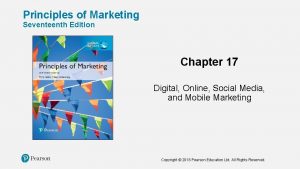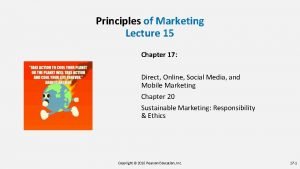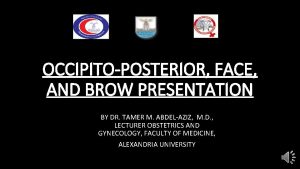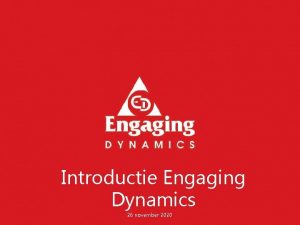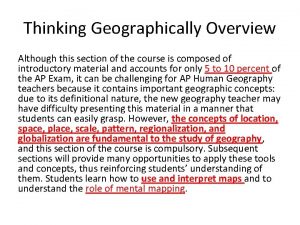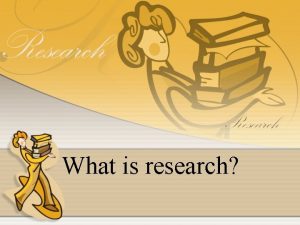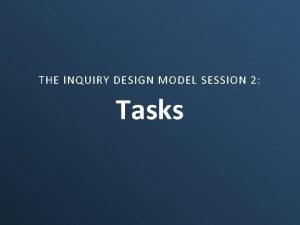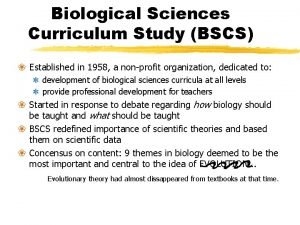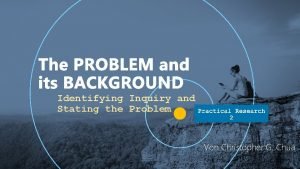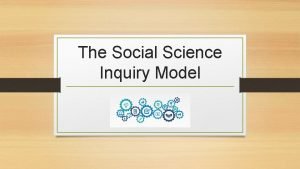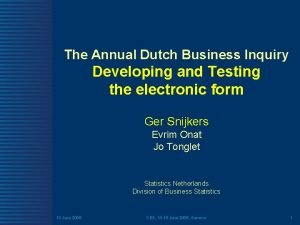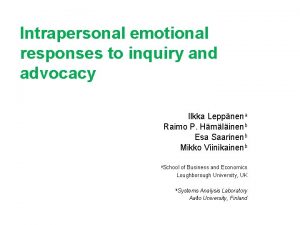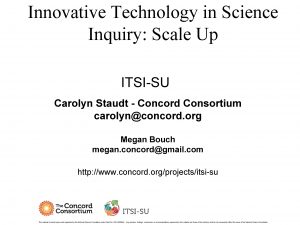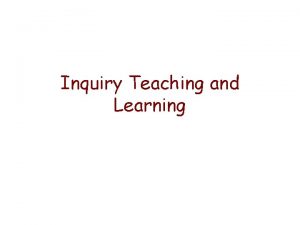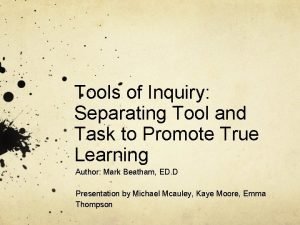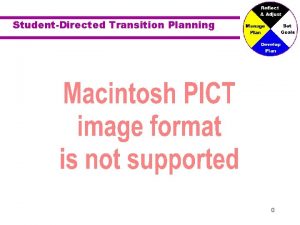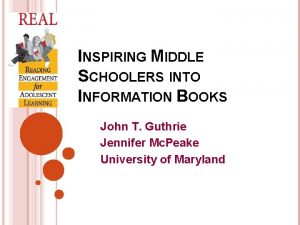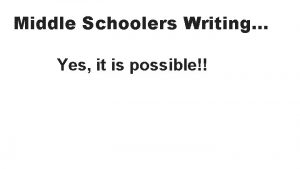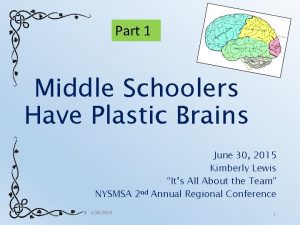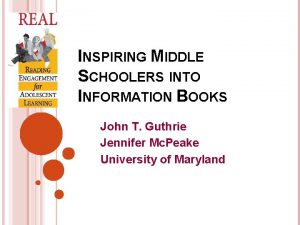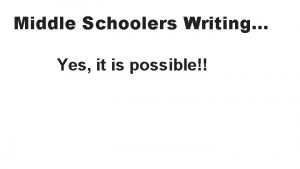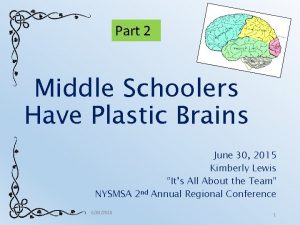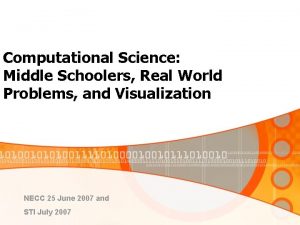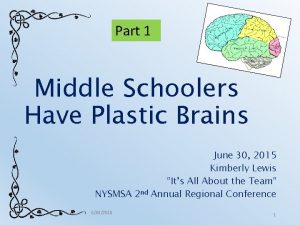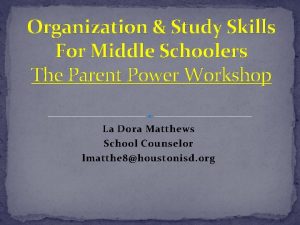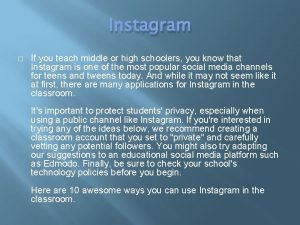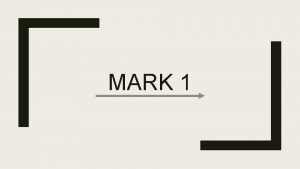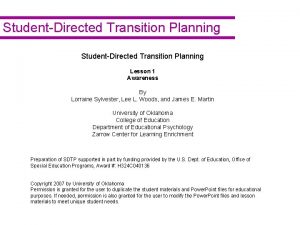VELscience Engaging Middle Schoolers in Studentdirected Inquiry within






















- Slides: 22

VELscience: Engaging Middle Schoolers in Student-directed Inquiry within Virtual Environments for Learning Susan Pedersen Associate Professor Educational Technology Program Texas A&M University

Two Broad Problems Lack of impact of computer technology (Cuban, Kirkpatrick, & Peck, 2001) l Difficulties in implementing reform-based science education (Chinn & Malhotra, 2002) l

Project Goal l Develop a replicable model for a computer -based program capable of engaging students in student-directed inquiry that enhances students’ l Ability to do scientific inquiry l Content knowledge l Attitude toward science

Student-Directed Inquiry l Bonnstetter, 1998

The Task l l l Is compelling Addresses grade-appropriate science and mathematics concepts and skills Requires students to l l l Learn new concepts Create a product that can be used to assess their understanding Use virtual tools and information technologies (contained within the program) that resemble those used by professional scientists

The Virtual Environment Physical setting in which all action takes place l Contains defined spaces where various tools and resources are located and where students encounter embedded challenges l

Opening Scenario Multimedia l Provides backstory l Sets up task l Does not direct process l

Information Resources Scaled versions of emerging technologies (real data sets, satellite images) l Virtual instruments l Multimedia resources l

Assessment Management System l l Web-based system designed to support systematic collection and analysis of performance data on students Immediate access to student artifacts, paired with instruments and suggestions on assessing student understanding l l Rubrics Checklists Item Bank Supports timely feedback to students as they are immersed in the VEL.

The Role of the Teacher l l l Allow students to determine what they need to know in order to complete the task Encourage sharing of information, discussion, and debate among students Ask questions designed to get students to articulate their understandings and reasoning Relate what students do in the module to key science concepts and test items Strike a balance; don’t direct students’ process, but don’t let them flounder

Energy source Power generator Energy transformations that occur Advantages Disadvantages Solar Energy Solar arrays Light energy -> electrical energy Renewable Free Availability generally reliable Supply will last as long as the sun Non-polluting Renewable Free Take up less space than the average power station Generate energy in remote locations Renewable Can be used in most diesel engines, especially newer ones Less carbon monoxide, particulates, and sulfur dioxide emissions 78% less carbon dioxide (CO 2) production Wind Energy Wind turbines Kinetic energy -> mechanical energy -> electrical energy Biomass energy Biodiesel generator Chemical energy -> mechanical energy -> kinetic energy -> electrical energy Biodegradable Non-toxic Safer to handle Amount of sunlight is not constant but dependent on location, time of day, time of year, and weather conditions; a large surface area is required to collect the energy at a useful rate Amount of wind is not constant Multiple wind turbines required Construction is expensive Noisy when within a few hundred meters Slightly lower fuel economy and power (10% lower for B 100, 2% for B 20) Currently more expensive More nitrogen oxide emissions

Explosion on Mars and the TEKS l (6. 2)Scientific processes. The student uses scientific inquiry methods during field and laboratory investigations. The student is expected to: l l l (A) plan and implement investigative procedures including asking questions, formulating testable hypotheses, and selecting and using equipment and technology; (B) collect data by observing and measuring; (C) analyze and interpret information to construct reasonable explanations from direct and indirect evidence; (D) communicate valid conclusions; and (E) construct graphs, tables, maps, and charts using tools including computers to organize, examine, and evaluate data.

Explosion on Mars and the TEKS l (6. 3)Scientific processes. The student uses critical thinking and scientific problem solving to make informed decisions. The student is expected to: l l l (A) analyze, review, and critique scientific explanations, including hypotheses and theories, as to their strengths and weaknesses using scientific evidence and information; (B) draw inferences based on data related to promotional materials for products and services; (C) represent the natural world using models and identify their limitations; (D) evaluate the impact of research on scientific thought, society, and the environment; and (E) connect Grade 6 science concepts with the history of science and contributions of scientists.

Explosion on Mars and the TEKS l (6. 4)Scientific processes. The student knows how to use a variety of tools and methods to conduct science inquiry. The student is expected to: l l (A) collect, analyze, and record information using tools including beakers, petri dishes, meter sticks, graduated cylinders, weather instruments, timing devices, hot plates, test tubes, safety goggles, spring scales, magnets, balances, microscopes, telescopes, thermometers, calculators, field equipment, compasses, computers, and computer probes; and (B) identify patterns in collected information using percent, average, range, and frequency.

Explosion on Mars and the TEKS l (6. 8) Science concepts. The student knows that complex interactions occur between matter and energy. The student is expected to: l l (A) define matter and energy; (6. 9) Science concepts. The student knows that obtaining, transforming, and distributing energy affects the environment. The student is expected to: l l l (A) identify energy transformations occurring during the production of energy for human use such as electrical energy to heat energy or heat energy to electrical energy; (B) compare methods used for transforming energy in devices such as water heaters, cooling systems, or hydroelectric and wind power plants; and (C) research and describe energy types from their source to their use and determine if the type is renewable, non-renewable, or inexhaustible.

VELscience and the TAKS l Situated Cognition l When we learn something in a context where it is useful we are more likely to l Develop a deep understanding of it l Remember it l Use it in other situations where it is relevant l Outside of school, we learn when we need to, and the things we learn are meaningful to us and therefore likely to be remembered and used in the future

What do TAKS items look like? Glucose molecules contain stored energy for plants. Glucose is made from carbon dioxide and water molecules during photosynthesis. What kind of energy do plants use to make glucose molecules? A. Electrical B. Sound C. Light D. Kinetic

What do TAKS items look like? The diagram shows a generator powered by a water turbine. Water flows through the turbine blades and turns the shaft. The turning shaft then powers a generator. What energy conversion takes place in the water turbine generator? A. Electrical energy is converted to mechanical energy. B. Solar energy is converted to thermal energy. C. Thermal energy is converted to electrical energy. D. Kinetic energy is converted to electrical energy.

VELscience and the TAKS l Which of the following is an example of a nonrenewable resource? A. B. C. D. Biomass fuels Fossil fuels Wind energy Solar energy

VELscience and the TAKS The diagram shows a generator powered by a wind turbine. What energy transformation takes place in this wind turbine? A. When wind energy hits the rotor blades it is transformed to mechanical energy and is then converted to electricity by the generator B. Wind energy is converted to kinetic energy by the rotor hub C. Wind energy is converted to thermal energy by the rotor blades and then to nuclear energy by the generator D. Kinetic energy is converted to chemical energy in the gearbox

VELscience and the TAKS The amount of power generated by a wind turbine depends on the wind speed and the swept area of the blades of the turbine. How would you calculate the swept area of the turbine shown in this picture? A. Swept area = 2 x rotor diameter B. Swept area = π x blade length 2 C. Swept area = π x rotor diameter 2 D. Swept area = 4 x π x blade length

VELscience and the TAKS Average k. Wh per m 2 per day 3 4 1 2 5 6 7 < 3. 0 – 3. 5 – 4. 0 – 4. 5 – 5. 0 – 5. 5 – 6. 0 – 6. 5 – 7. 0 – 7. 5 A solar power map of Texas is shown above. What is the best inference about the average levels of sunlight on the regions? A. Region 1 gets lower levels of sunlight than Region 2. B. Region 6 gets the highest levels of sunlight. C. Region 7 gets the lowest levels of sunlight. D. Region 3, 4, and 5 get the same levels of sunlight.
 Marketing involve engaging directly with carefully targeted
Marketing involve engaging directly with carefully targeted Marketing involve engaging directly with carefully targeted
Marketing involve engaging directly with carefully targeted Fundal grip
Fundal grip Dynamisch verbinden
Dynamisch verbinden Which of the following sets of maps would help explain
Which of the following sets of maps would help explain Research is rearranging facts.
Research is rearranging facts. Reply to an inquiry letter
Reply to an inquiry letter Appreciative inquiry criticism
Appreciative inquiry criticism Inquiry design model
Inquiry design model Bscs
Bscs What is identifying the inquiry and stating the problem
What is identifying the inquiry and stating the problem Shared inquiry
Shared inquiry Seeking information letter
Seeking information letter Social inquiry model
Social inquiry model Annual business inquiry
Annual business inquiry Advocacy inquiry model
Advocacy inquiry model Systematic inquiry aimed at the discovery of new knowledge
Systematic inquiry aimed at the discovery of new knowledge Innovative technology in science inquiry
Innovative technology in science inquiry Practical research nature of inquiry and research
Practical research nature of inquiry and research Inquiry answer 21
Inquiry answer 21 Contextual inquiry template
Contextual inquiry template Reactive discipline
Reactive discipline Separating tool
Separating tool
